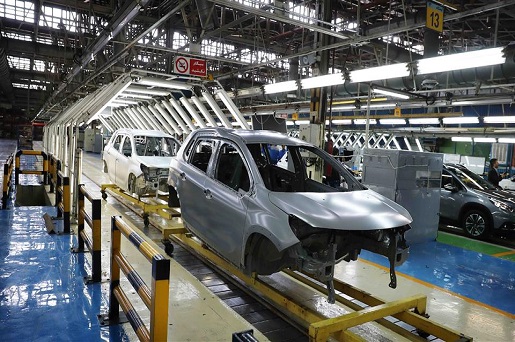Stopping development plans or achieving competitiveness in the automobile industry?
At the same time, the definite time for the start of the large car supply plan has been announced, and the experts in this field believe that in addition to the possible competitive advantages of this plan, it will create heavy obligations for the government and private car manufacturers from development goals such as diversifying the product portfolio and increasing the level of domestication.
 Khodrocar - The large car supply plan, which was supposed to start in the past few days, will begin in earnest from the 26th of Esfand with the official announcement of the Ministry of Industry, and qualified applicants who have taken action to complete the balance in the proxy account can start from Friday the 26th On Esfand, they should proceed with initial registration in order to be included in the waiting list of domestic cars.
Khodrocar - The large car supply plan, which was supposed to start in the past few days, will begin in earnest from the 26th of Esfand with the official announcement of the Ministry of Industry, and qualified applicants who have taken action to complete the balance in the proxy account can start from Friday the 26th On Esfand, they should proceed with initial registration in order to be included in the waiting list of domestic cars.According to the notification issued by the Ministry of Industry, the amount required to register in the queue list of all domestic cars is one hundred million tomans, and this credit is required until the announcement of the queue results, or in other words, until the end of April, in the personal account of the customers. and withdrawing from the proxy account or withdrawing money by the applicant during this period is considered as withdrawing from the plan and being removed from the waiting list.
Abdollah Tavakoli Lahijani, The Director General of the Automobile Industries Office of the Ministry of Industry, while explaining the details of this project, emphasized that based on the production plan of the automobile manufacturers and stabilization of the production flow, it will be announced from April next year that it will be the turn of the car to be delivered to all applicants, and after that, based on the call of the automobile manufacturers and the daily price. Approved by the Competition Council, the applicants can confirm the registration.
These details were announced while the review of the production statistics in the past years shows that from 2017 to 2020, less than one million cars and about 800 thousand cars were produced, 20% of which were defective cars, but this year By improving the production situation and overcoming the crisis of car production reduction, it is estimated that by the end of the year, the production of one million and 300 thousand units will be achieved, which will increase the production by 40% and will stabilize the production flow in the country.
In this situation, the experts in this field predict that with the implementation of this plan and the transfer of cars, the car market will move towards becoming competitive in the next year. But on the other hand, different comments are also raised and it is emphasized that this plan has created heavy obligations for car manufacturers, which will show its effects in the coming years, because in a situation where car manufacturers are looking to reduce their losses and make their obligations zero, acting on These contracts will put them in a difficult situation.
Therefore, some car manufacturers are not very willing to make such heavy commitments and have expressed their opposition in this regard.
In his statement, Tavakoli Lahiji also emphasized that this model was derived from a successful model in some countries, but it is not clear which country is the source of this model, which is seeking to meet the needs of the market by creating heavy obligations for car manufacturers.
However, the registration and creation of about 500,000 commitments for car manufacturers with an advance payment of 100 million tomans, along with the registration of 120,000 applicants for imported cars with an advance payment of 500 million tomans for each vehicle, has blocked high liquidity in banks and up to It has led to the management of the current stray liquidity, but it will undoubtedly bring many inefficiencies for the car companies and will push them back from implementing their development plans.
Definitely, the only hope of increasing the production circulation in the next year cannot be a factor for such plans for government or even private car manufacturers, because the movement of assemblers towards increasing the amount of domestication has weakened in the shadow of the fulfillment of commitments and the effect of this The decision of the state-owned car manufacturers will also be reflected in the diversification of the product portfolio.
Now we have to wait for the announcement of the mechanism for determining the priorities and the schedule for fulfilling the obligations of the automakers, although it seems that this part of the plan is one of the most challenging parts of the big supply plan.
Latest News


